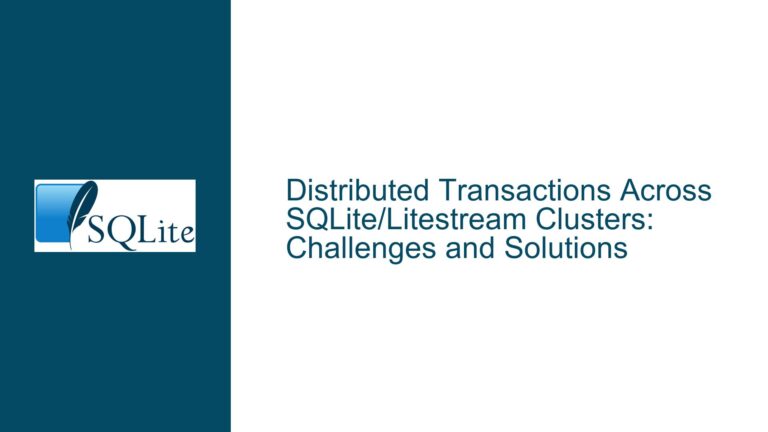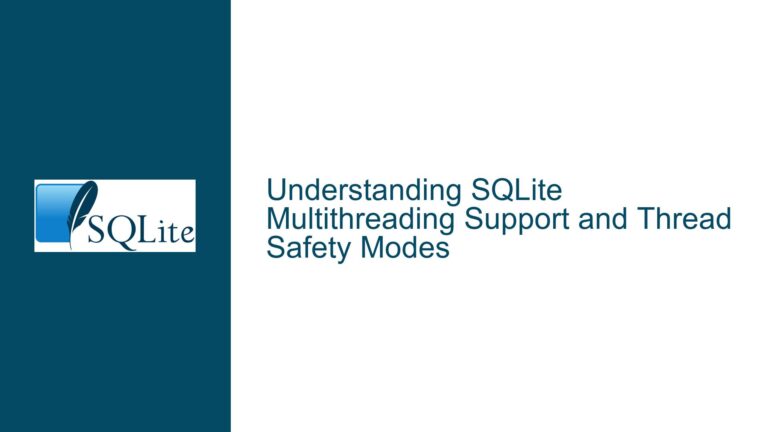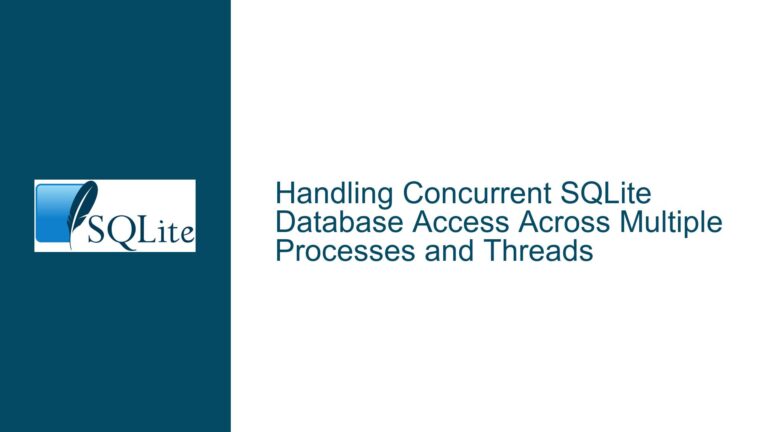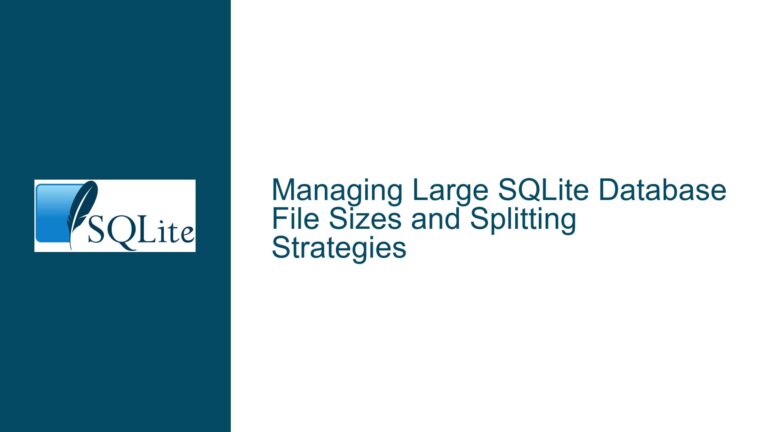TSAN Reports Data Races in SQLite WAL Header Access
Data Races in WAL Header Access During Multi-Threaded Operations
The issue at hand involves ThreadSanitizer (TSAN) reporting data races when SQLite is used in multi-threaded mode with a Write-Ahead Logging (WAL) enabled database. These data races occur during concurrent read and write operations on the WAL header, which is a critical part of SQLite’s WAL mechanism. The WAL header contains metadata that is essential for coordinating transactions and ensuring data consistency across multiple threads. When multiple threads attempt to read or write the WAL header simultaneously without proper synchronization, TSAN detects these operations as data races, which can lead to undefined behavior or data corruption in real-world applications.
The primary data race occurs between the walIndexTryHdr and walIndexWriteHdr functions. The walIndexTryHdr function is responsible for reading the WAL header to determine the current state of the WAL, while walIndexWriteHdr updates the WAL header during transaction commits. These functions are invoked by different threads, and without proper atomic operations or synchronization mechanisms, TSAN flags these accesses as data races. The stack traces provided in the discussion clearly show the conflicting memory accesses, with one thread reading the WAL header while another thread is writing to it.
Additionally, other data races are reported in the pInfo->aReadMark and sLoc.aHash structures. These structures are used internally by SQLite to manage read and write operations in the WAL. The pInfo->aReadMark structure tracks the read marks for each reader, while sLoc.aHash is used for hash table operations within the WAL. These data races are less severe but still problematic, as they can lead to inconsistent state or incorrect behavior in multi-threaded environments.
Causes of Data Races in WAL Header and Related Structures
The root cause of these data races lies in the lack of proper synchronization mechanisms when accessing shared data structures in a multi-threaded environment. SQLite’s WAL mechanism is designed to allow concurrent reads and writes, but this concurrency must be carefully managed to avoid data races. The current implementation does not consistently use atomic operations or other synchronization primitives to protect shared data structures, leading to the reported TSAN warnings.
In the case of the WAL header, the walIndexTryHdr and walIndexWriteHdr functions access the same memory location without any explicit synchronization. While SQLite’s documentation states that multi-threaded use is supported, the implementation assumes that the underlying system provides sufficient memory ordering guarantees. However, TSAN is more stringent and flags any unsynchronized access to shared memory as a potential data race. This discrepancy between SQLite’s assumptions and TSAN’s requirements is the primary cause of the reported issues.
For the pInfo->aReadMark and sLoc.aHash structures, the data races occur because some accesses to these structures are not protected by atomic operations. While most references to pInfo->aReadMark already use AtomicLoad and AtomicStore, a few direct reads and writes do not, leading to inconsistent behavior under TSAN. Similarly, the sLoc.aHash structure is accessed directly without any atomic operations, which TSAN flags as a data race. These issues are relatively easy to fix but require careful analysis to ensure that all accesses to these structures are properly synchronized.
Resolving Data Races with Atomic Operations and Compiler Attributes
To address the data races reported by TSAN, several changes can be made to the SQLite codebase. The most straightforward solution is to use atomic operations for all accesses to shared data structures. This includes replacing direct reads and writes with AtomicLoad and AtomicStore for the pInfo->aReadMark and sLoc.aHash structures. These changes ensure that all accesses to these structures are properly synchronized, eliminating the data races reported by TSAN.
For the WAL header, the situation is more complex. The walIndexTryHdr and walIndexWriteHdr functions perform critical operations that must be carefully synchronized to avoid data races. One approach is to use atomic operations for all accesses to the WAL header, but this may introduce performance overhead. Alternatively, the __attribute__((no_sanitize_thread)) attribute can be used to suppress TSAN warnings for these functions. This attribute tells the compiler to ignore thread sanitizer checks for the specified functions, effectively treating them as safe from data races. However, this approach should be used with caution, as it assumes that the functions are already thread-safe and do not require additional synchronization.
Another approach is to use conditional compilation to exclude problematic code from TSAN checks. This can be done using the #if defined(__has_feature) && __has_feature(thread_sanitizer) preprocessor directive. This directive allows specific code paths to be excluded when compiling with TSAN, ensuring that the code behaves correctly under normal conditions while avoiding false positives from TSAN. For GCC, the __SANITIZE_THREAD__ macro can be used instead, as it provides similar functionality.
In summary, the data races reported by TSAN in SQLite’s WAL mechanism can be resolved through a combination of atomic operations, compiler attributes, and conditional compilation. These changes ensure that SQLite behaves correctly in multi-threaded environments while avoiding false positives from TSAN. By carefully analyzing and addressing the root causes of these data races, SQLite can continue to provide reliable and efficient database operations in multi-threaded applications.






